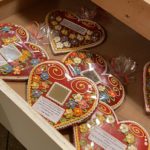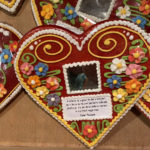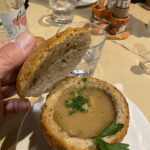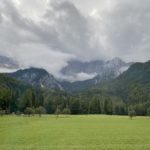Papantla de Olarte The day began with a buffet breakfasting the hotel. After, we are off to the Nordic Center at Plancia. This is a year round training center for ski jumping or flying, cross country skiing, and features a zipline. In the warmer months, Slovenians and their visitors take advantage of the trails for hiking and biking. Folks are very fit here!

buy gabapentin 300 mg The Goldenhorn statue near Lake Jasna near Kranjska Gora
The drive was fairly short, past villages and an iron plant factory, to an area of Slovenia nestled between Austria and Italy. We were forced to take a detour since our preferred route was closed due to an accident. We passed by Lake Jasna, a lake created by a hydroelectric dam. As with the other lakes we saw, the water was clear and we could easily see the limestone bottom.
By the time we arrived at the Plancia Nordic Center, the upper mountains were covered in clouds. We watched as folks training for ski jumping, practiced on the slopes. The slopes were covered with artificial turf and were regularly sprinkled with water to make them
usable without snow. There was a zipline from the top of the highest jump to the bottom parking lot that was in regular use. We decided to forgo the zip line, especially since we would have had to climb to the top – there was no cable car or chair lift! Inside we found snow and a gentleman practicing his cross country skiing. There was also an aerodynamic chamber where jumpers could practice their form and make themselves as aerodynamic as possible. We watched a short film, tracing the history of ski jumping and the advancement of techniques used to garner longer and longer distancse. In the last World Cup, the record of 250 Ski Jump Video meters was set by a Slovenian at Plancia. During our entire visit here, that old Olympic scene kept rolling in my head: The agony of defeat – when the ski jumper toppled off the jump during competition.
We left the Nordic Sport Center and headed to Kranjska Gora, a traditional alpine village, for a walk-about. We stopped for another taste of Lasko beer and ran into several folks from our group, along with Juko, our guide.
We had about a five minute walk. to our restaurant, when the. skies opened up and we were caught in the deluge. Rain jackets in hand, but umbrellas were back in hotel. Before dinner, we were treated to a gingerbread making presentation! Dinner tonight was at Gostilna Lecta in Radovlijca, one of the oldest trattorias in Slovenia, serving regional Slovenian specialties, local wines, and traditional sweets, known as Lectar Hearts.
The gingerbread making demonstration was interesting but not what we expected. It turns out that. it takes 24 days to make gingerbread. The recipe used by Joze’s family consists of flour, honey, and spices. It is very manual, even the sheeter to press the dough is manually operated. Joze makes traditional heart shaped cookies, ranging in price from 10 euros to 150 euros, depending on size. Since they consist of no butter or eggs, they can last for many years. Some he had on display were framed and were 30 or 40 years old. Might be had as a brick!
We moved upstairs for dinner. We were greeted with Rakija, a fruit liquor similar to grappa. This one was made with pears. Along with it, Joze served us a bread cube to dip in salt – a custom of Slovenian hospitality. We were given a choice of red or white local wine. First course was a mushroom soup, served in a bread bowl. Next, served family-style, was a platter of two different sausages, turnip sauerkraut, sauerkraut, potatoes, roast pork, horseradish served in a tomato, and a noodle kugel. Â Dessert was a hollowed out apple, stuffed with ice cream!
The owner of Gostilna Lecta in Radovlijca, Joe singing and playing guitar.
Bled Photo Gallery
































